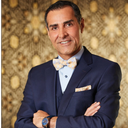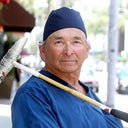Posted underScar Removal q&a
What treatment is suggested for a permanent Rhinoplasty scar after 4 years? (photos)
I had an open rhinoplasty done 5 years ago and a second procedure 4 years ago by the same doctor. After the surgery, there were red scars left on nose and they're visible from the side. The incision left an indentation and from up close, it seems obvious I had surgery. My skin is very oily and I have thick skin. What are my options to reduce the visibility of the scar? Are there any non-surgical procedures?
Answers (10)
From board-certified doctors and trusted medical professionals
Dr. Raffy Karamanoukian, MD, FACS

Dr. Raffy Karamanoukian, MD, FACS
Board Certified Plastic Surgeon
Answer
Dr. Kevin Sadati, DO

Dr. Kevin Sadati, DO
Facial Plastic Surgeon, Board Certified in Otolaryngology – Head and Neck Surgery
Answer
Dr. Amy T. Bandy, DO, FACS

Dr. Amy T. Bandy, DO, FACS
Board Certified Plastic Surgeon
Answer
Dr. Toby Mayer, MD

Dr. Toby Mayer, MD
Board Certified Facial Plastic Surgeon
Answer
Dr. Todd Christopher Hobgood, MD
Dr. Todd Christopher Hobgood, MD
Board Certified Facial Plastic Surgeon
Answer
Dr. Andrew S. Frankel, MD
Dr. Andrew S. Frankel, MD
Board Certified Facial Plastic Surgeon
Answer
Dr. Arian Mowlavi, MD, FACS (license on probation)
Dr. Arian Mowlavi, MD, FACS (license on probation)
Board Certified Plastic Surgeon
Answer
Dr. Frederic H. Corbin, MD (license restricted)
Dr. Frederic H. Corbin, MD (license restricted)
Board Certified Plastic Surgeon
Answer
Dr. Somyos Kunachak, MD - Account Suspended
Dr. Somyos Kunachak, MD - Account Suspended
Facial Plastic Surgeon
Answer
Dr. Richard W. Fleming, MD (retired)
Dr. Richard W. Fleming, MD (retired)
Board Certified Facial Plastic Surgeon
Answer
More Scar Removal Questions
See all Scar Removal Q&AWE SEND PRETTY
EMAILS
What’s trending? Who’s turning heads? Which TikTok myths need busting? We’ve got you. No fluff, no gatekeeping—just real talk. Get our free, unfiltered newsletter.